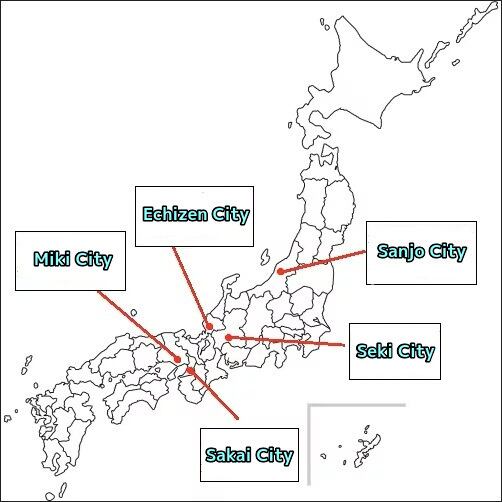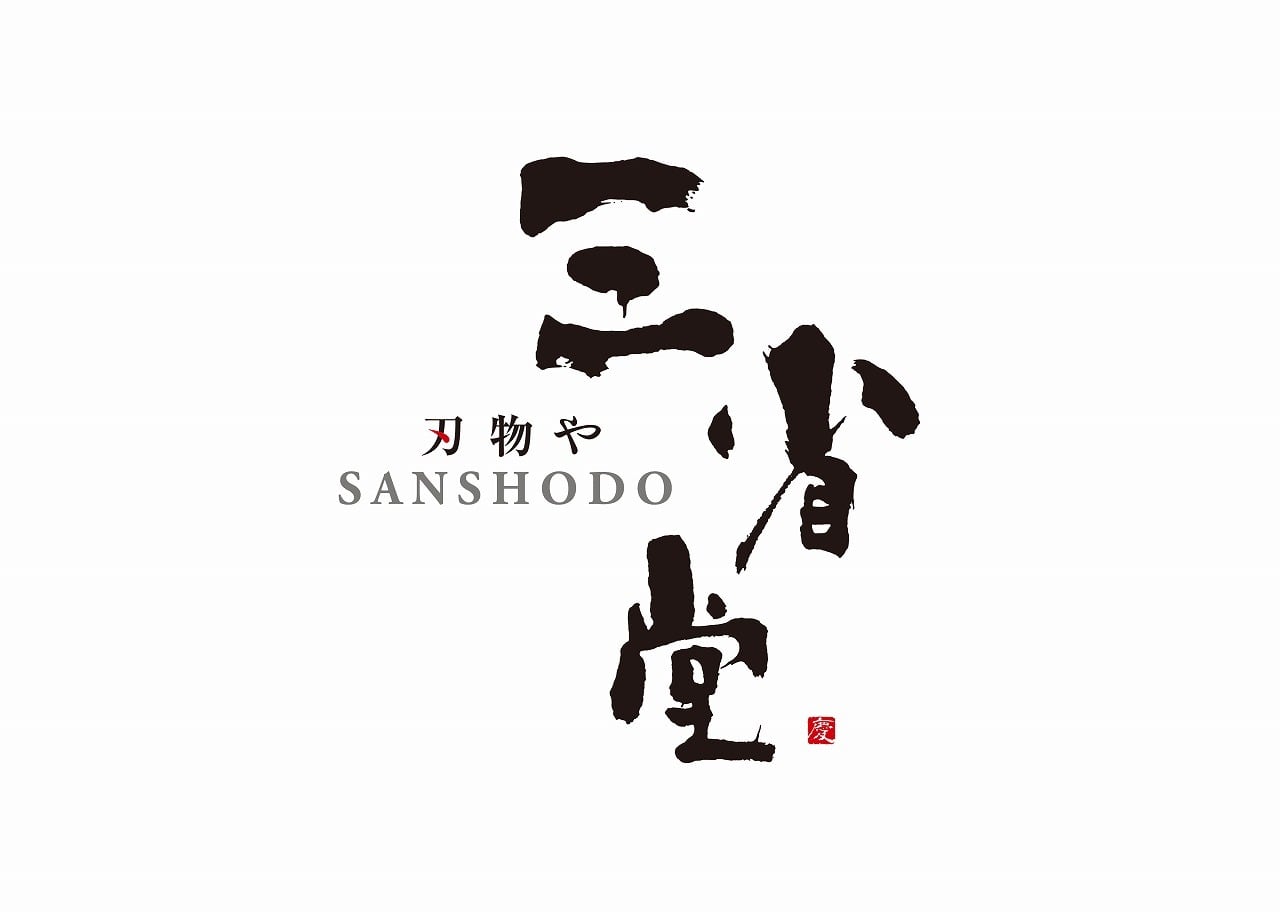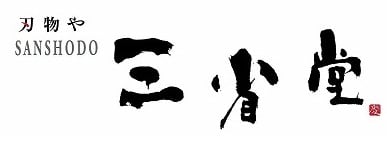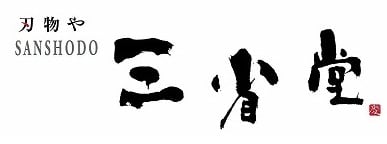~Enrich your culinary experience with the right tools.~
In all cuisine, the way ingredients are cut is crucial in bringing out their full potential. Using a dull knife can cause the tissue to collapse, resulting in a loss of flavor and ruining the entire dish. On the other hand, cutting ingredients properly can dramatically improve the dish.
At Hamonoya-Sanshodo, we are dedicated to providing you with special knives that deliver surprise and excitement through their sharpness and craftsmanship.
Let us help you take your cooking to the next level with our full support.

・Seki City, Gifu Prefecture
・Echizen City, Fukui Prefecture
・Sakai City, Osaka Prefecture
・Miki City, Hyogo Prefecture
・Sanjo City, Niigata Prefecture
-

Santoku knife, Katayama-made, Damascus, with a rosewood handle, 170mm(和三徳 片山作 ダマスカス 紫檀柄 170mm)
¥21,400($139.10)
Renowned among those in the know, master craftsman 'Katayama-made' stainless Damascus Santoku knife Located in Echizen City, Fukui Prefecture, 'Katayama Uchihamono' Not only does this workshop produce kitchen knives but also other types of knives that are indispensable for chefs throughout Japan, known only by those familiar with this master craftsman's Santoku knives. Knife Description Origin: Echizen City, Fukui Prefecture (Echizen Cutlery) Type: Santoku knife Blade length: 170mm Steel material: Damascus (Core material: VG10) Handle: Rosewood handle
-

Santoku Knife, Senzou, Twisted Octagonal White Wood Handle, With Bolster, 167mm(三徳 仙蔵 ひねり八角白木柄 口金付 167mm)
¥23,300($151.45)
Bringing traditional Japanese style into the modern era, this knife combines ease of use with a modern aesthetic in a beautifully shaped design. Inspired by the traditional octagonal handle of Japanese knives, this handle has been tweaked to be more ergonomic, with a twist towards the blade and a rounded shape. This design allows the fingers to comfortably align with the handle's lines. The blade is made of Damascus steel with a beautiful ripple pattern. The core material, VG10, is chosen for its excellent sharpness and durability. The water-resistant laminated reinforced wood handle, combined with the Damascus steel's ripple pattern, creates a modern impression. Description of the Blade Origin: Seki City, Gifu Prefecture (Seki Cutlery) Category: Santoku Blade length: 167mm Size: Approximately 300×49×21mm Weight: Approximately 170g Steel material: Damascus steel (core material: VG10) Handle: Laminated reinforced wood with bolster (The inclusion of a bolster prevents dirt from accumulating at the junction of the blade and handle, ensuring hygienic use) In the world of knives, Damascus steel is famous for its wood-grain-like patterns and is highly sought after, often leading to stock shortages. This steel is made by layering thin sheets of steel, creating the wood-grain pattern when forged. Originally developed in ancient India, contemporary Damascus steel knives are often finished or patterned to mimic this traditional steel. Most of these steels are produced by steel manufacturers, with some forges also creating similar patterns. Knife manufacturers might use terms like "Damascus finish," "Suminagashi," "forged surface," or "laminated steel," but essentially, these are all part of the same category.
-

Santoku Knife, Senzou, Hammered Finish, Classic Black Plywood Handle, 167mm(三徳 仙蔵 鎚目 クラシック黒合板柄 167㎜)
¥20,000($130.00)
To enjoy the classic fusion of traditional Japanese and modern styles in cooking, a knife with exceptional sharpness is essential. Furthermore, with the varied nature of ingredients, a knife that can precisely and cleanly cut through different textures is necessary. This knife is designed to minimize sticking of both classic and modern ingredients, allowing for quick and accurate cutting. It's easy to use for delicate cooking and is an excellent choice for various culinary situations. Description of the Blade Origin: Seki City, Gifu Prefecture (Seki Cutlery) Category: Santoku Overall length: 300mm Blade width: 47mm Weight: 200g Blade length: 167mm Steel material: Damascus steel (core material: VG10) In the world of knives, Damascus steel is renowned for its popularity, especially for its wood-grain-like patterns, which often lead to stock shortages. The process involves layering thin steel materials in a mille-feuille manner, and the wood-grain pattern emerges during the blade-making process. Historically, Damascus steel was developed in ancient India, and current cutlery often features "Damascus finish" or "Damascus pattern," mimicking the appearance of traditional Damascus steel. These steel types are mainly produced by steel manufacturers, with some forges creating similar patterns through their forging process. The terminology used by knife makers, such as "Damascus finish," "Suminagashi," "forged surface," or "laminated steel," can be confusing, but they generally refer to the same category of steel.
-

Santoku Sai Damascus Steel Micarta Pattern with Base 170mm(三徳 サイ ダマスカス鋼 マイカルタ柄 口金付 170mm)
¥18,600($120.90)
Cutlery description Production area: Echizen City, Fukui Prefecture (Echizen Cutlery) Classification: Santoku Blade extends: 170mm Steel: Damascus Steel Pattern: My chart handle with lip remedy (By sticking to the mouthpiece, it is difficult for dirt to accumulate at the boundary between the blade and the handle where dirt tends to accumulate, and can be used hygienically)
-

Santoku V Gold No.10 Laminated Steel 165mm(三徳 誠貴作 V金10号 積層鋼 165mm)
¥14,900($96.85)
SOLD OUT
Cutlery description Production area: Miki City, Hyogo Prefecture (Banshu Miki Uchihamono) Classification: Santoku Blade extends: 165mm Steel: V-gold No. 10 Structure: Laminate structure Pattern: Black plywood Santoku is made at Tanaka Kazuyuki Cutlery Manufacturing Co., Ltd. in Miki City, Hyogo Prefecture. It's only natural to cut well. Makoto's unique kitchen knife is a unique kitchen knife full of originality that cannot be found anywhere else. The suggested point is the laminated structure in which the stainless steel of which the stainless steel is made is hardened to impart sharpness to the center of the blade flanked in a mille-feuille shape, and by honing it, a wave pattern in which many passes are completed. Because these blades are sharpened by artisans one by one, the exact same pattern is not finished, and only one pattern is made in the world.
-

Santoku Tanaka Kazuyuki V Gold No.10 Laminated Steel 150mm(小三徳 誠貴作 V金10号 積層鋼 150mm)
¥22,300($144.95)
Cutlery description Production area: Miki City, Hyogo Prefecture (Banshu Miki Uchihamono) Classification: Santoku Blade extends: 150mm Steel: V-gold No. 10 Structure: Laminate structure Pattern: Black plywood Santoku is made at Tanaka Kazuyuki Cutlery Manufacturing Co., Ltd. in Miki City, Hyogo Prefecture. It's only natural to cut well. Makoto's unique kitchen knife is a unique kitchen knife full of originality that cannot be found anywhere else. The suggested point is the laminated structure in which the stainless steel of which the stainless steel is made is hardened to impart sharpness to the center of the blade flanked in a mille-feuille shape, and by honing it, a wave pattern in which many passes are completed. Because these blades are sharpened by artisans one by one, the exact same pattern is not finished, and only one pattern is made in the world.
-

Small santoku Damascus finish octagonal laminated pattern 135mm(小三徳 ダマスカス仕上げ 八角積層柄 135mm)
¥13,100($85.15)
Kosantoku knives are made with Japanese kitchen knives as the motif. Cutlery description Production area: Echizen City, Fukui Prefecture (Echizen Cutlery) Classification: Kosantooku Blade extends: 135mm Steel material: Powder high speed steel Pattern: Octagonal laminate pattern (Because it is laminated, the density in the handle is high and it is a pattern with excellent water resistance.) ) The blade has a laminated structure, and because artisans make it by hand one at a time, it is difficult to reproduce the pattern of the cutting edge and is finished in the only pattern in the world. The flat part of the blade is made of hammer, and there is a gap between the material and the blade, making it very difficult to get away from the blade. In addition, the handle has a laminate structure, and the density in the handle increases by overlapping and compressing the thinned wood, making it a pattern with excellent water resistance.
-

Santoku TAMAHAGANE Bamboo Kyoto Damascus 175mm(三徳 TAMAHAGANE 竹 響十 ダマスカス 175mm)
¥22,500($146.25)
Cutlery description Production area: Sanjo City, Niigata Prefecture (Sanjo Cutlery) Classification: Santoku Blade extends: 175mm Steel: Damascus Steel (63 layers) Pattern: monaka handle (Handle part is hollowed out and adopts "monaca stainless structure" which is light in weight and keeps beauty forever.) In addition, it is a hygienic handle which allows cleaning of sterilizing water, detergents, etc. high pressure, etc. use 18-8 stainless steel. * Do not use hypochlorous acid, chlorine, etc. sterilizer. ) Damascus steel is made from Indian woots and forged into swords and other swords in Damascus, Syria. Its biggest feature is the unique pattern that occurs when molten cast steel is solidified in the crucible, and very few people know the method of manufacture. During the Crusades, it was prized as a famous sword for its mysterious beauty and value. It is now damascus steel to reproduce this pattern.
-

Santoku Masuya Laminated V Gold No. 10 with Base 170mm(三徳 ますや 積層 V金10号 口金付 170mm)
¥14,400($93.60)
SOLD OUT
Cutlery description Production area: Echizen City, Fukui Prefecture (Echizen Cutlery) Classification: Santoku Blade extends: 165mm Steel: V-gold No. 10 Pattern: Black gold co-mouthed plywood (By sticking to the mouthpiece, it is difficult for dirt to accumulate at the boundary between the blade and the handle where dirt tends to accumulate, and can be used hygienically)
-

Santoku Masya V Gold No. 10 Hammered Laminated Laminated Green Pattern 170mm(三徳 ますや V金10号 鎚目 積層 積層緑柄 170mm)
¥17,900($116.35)
SOLD OUT
Cutlery description Production area: Echizen City, Fukui Prefecture (Echizen Cutlery) Classification: Santoku Blade extends: 170mm Steel: V-gold No. 10 Pattern: Laminate green pattern with metal mouth (By sticking to the mouthpiece, it is difficult for dirt to accumulate at the boundary between the blade and the handle where dirt tends to accumulate, and can be used hygienically) The blade has a laminated structure, and because artisans make it by hand one at a time, it is difficult to reproduce the pattern of the cutting edge and is finished in the only pattern in the world. The flat part of the blade is made of hammer, and there is a gap between the material and the blade, making it very difficult to get away from the blade. In addition, the handle has a laminate structure, and the density in the handle increases by overlapping and compressing the thinned wood, making it a pattern with excellent water resistance.
-

Santoku Masuya V Gold No. 10 Hammer Laminated Laminated Black Pattern 170mm(三徳 ますや V金10号 鎚目 積層 積層黒柄 170mm)
¥18,600($120.90)
A hammer blade that doesn't stick to the material by passing through many blades Because I made them by hand one by one, and the blade emblems are not reproducible This is a shining kitchen knife with a hammer blade that makes the flat blade (top side of the knife) blur. Cutlery description Production area: Echizen City, Fukui Prefecture (Echizen Cutlery) Classification: Santoku Blade extends: 170mm Steel: V-gold No. 10 Pattern: Laminate black pattern with mouth (By sticking to the mouthpiece, it is difficult for dirt to accumulate at the boundary between the blade and the handle where dirt tends to accumulate, and can be used hygienically)



